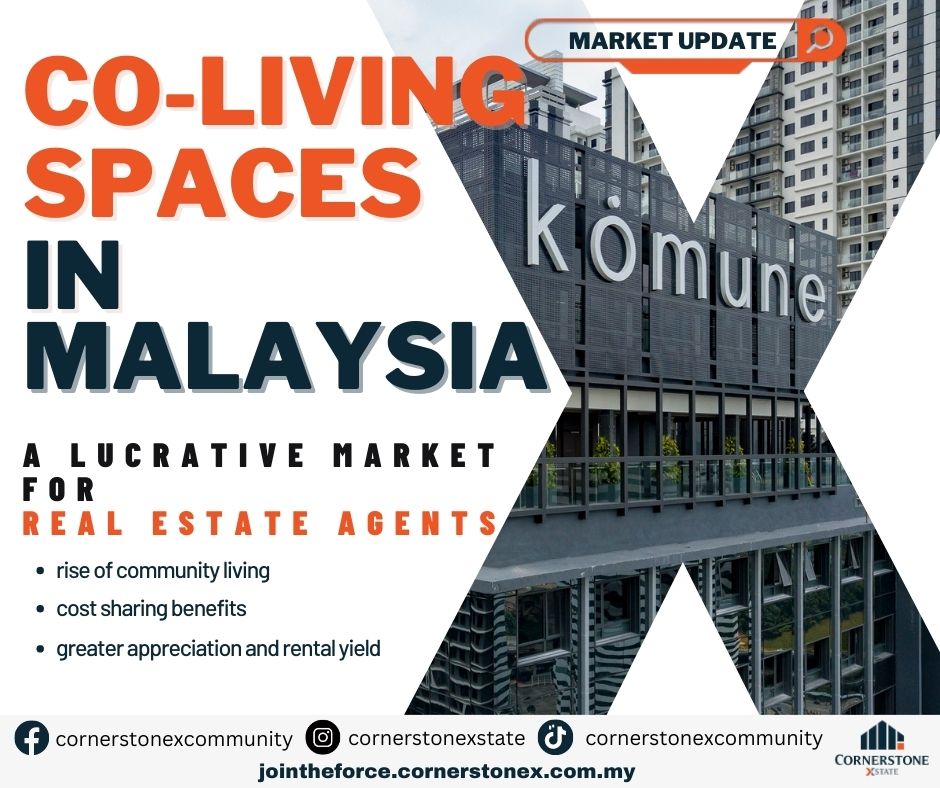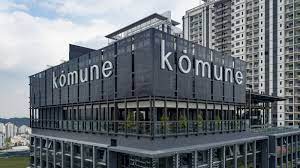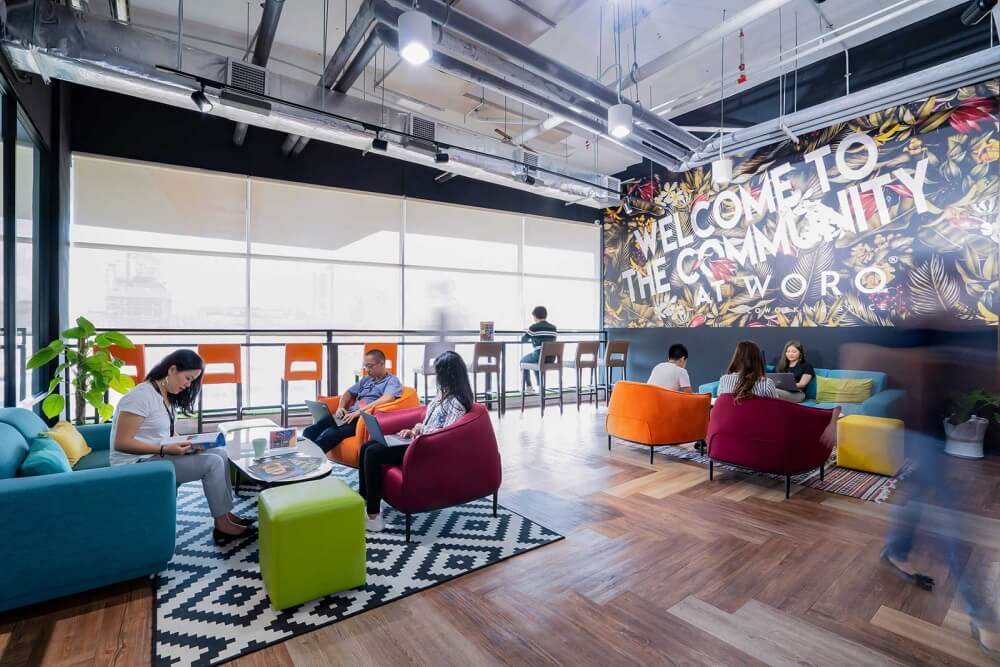
The Growing Demand for Co-Living Spaces in Malaysia
A Lucrative Market for Real Estate Agents
Co-living is without doubt a niche, creative & game-changing concept in property lifestyle for quite some time now. Moreover, it is fast gaining traction or momentum in Malaysian real estate. Just as with Airbnb and other forms of staycation, co-living (or community living) is currently enjoying wide acceptance and unprecedented popularity amongst local and global communities especially with digital nomads in Malaysia. Co-living offers a unique living experience that fosters community, connectivity, and convenience. With rising demands for affordable homes, co-living property provides a win-win opportunity for both tenants and property owners. Agents and negotiators are also jumping on the co-living bandwagon as well as capitalizing (or cashing in) on this lucrative market trend and thriving marketplace.
Co-living has emerged as an innovative solution to the challenges faced by tenants and investors in the rental market. With multiple advantages such as cost-sharing, capital appreciation, rental yields, demand hotspots, government/community support as well as local homeowners converting their properties, investing in a co-living property can be a profitable and prosperous venture. As demand for affordable and community housing remains bullish, co-living is most likely to shape the future of the Malaysian real estate market. This augurs or bodes well for real estate agents and negotiators as they continue to reap the benefits of a booming property market!

The Rise of Community Living
Owning a home nowadays is almost impossible with the skyrocketing house prices. That is why most Malaysians prefer to rent instead. Co-living seems like an ideal option for those who seek a living space that is simplistic, flexible yet affordable. You may also leave at an instant whenever you wish with no caveats or conditions. In short, there are no strings attached with co-living. This lifestyle format appeals to young professionals with a tight budget amid rising living costs and escalating property prices. Apart from purpose-built co-living properties, a growing trend among homeowners is converting their homes into co-living spaces. This is done by exploiting (making use of) under-utilized space within their properties to generate extra income by renting out individual rooms. This allows homeowners to adapt to evolving residential landscape while maximizing a property's prospects. Komune Living, located at Bangsar South, Kuala Lumpur is an excellent example of a fine co-living space or enclave in Malaysia.

From Co-Working to Co-Living
The proliferation of co-working spaces in Malaysia is unsurprising as there is a huge demand for affordable rental office spaces. Much like a normal office, co-working space is minimalist designed with simply the bare essential in placed to reduce cost and expenditure. This is truly beneficial for business start-ups and young entrepreneurs who require a low-budget temporary office for work or leisure. Co-living is basically a concept of co-working space integrated with a home living space for living, dining, leisure, resting and recreation. It is essentially a shared platform for networking purposes whereas a typical rental home is just a residential place for lease that is temporarily owned.

Cost-Sharing Benefits
One key benefit of co-living properties is tenants share all the costs associated with renting. By sharing communal spaces, utilities, and amenities, residents can significantly lower or reduce their overall expenditure. Compared with a standard rental unit, co-living space usually has a single bundled bill for all expenses rolled into one. You know what you are paying for because there is only one standardized bill. No utility/maintenance fees, abrupt price hikes or unreasonable rental rates increment for the duration of your stay. As co-living is supposed to be economical and appealing to young professionals and millennials alike, any price change or fluctuation is controlled by the management to ensure it remains feasible and favourable to all.

Robust Rental & Subsale Market
Co-living properties present an attractive alternative in the rental market. With the rising cost of living, many individuals and young professionals are seeking affordable and flexible housing options. Co-living spaces provide a no-brainer solution by offering compact, more optimal, and fully-furnished rooms within a shared environment. This configuration or arrangement appeals to a broad-band demographic which include students, graduates, young professionals, digital nomads, and people who value community living. As a result, rental rates remain robust within the local secondary or sub-sale market.

Greater Appreciation & Rental Yield
Investing in a co-living property can produce long-term capital growth. With urban areas experiencing population growth and a housing shortage, there exists strong demand for affordable housing. It is an excellent opportunity for investors to achieve high rental yields and capital appreciation. Owing to the multiple-tenancy arrangement, rental income derived from a co-living property is substantially higher compared to traditional rentals which then leads to a more lucrative return on investment. Demand hotspots such as urban townships, academic centres and employment hubs with a young population are prime locations for co-living developments. Occupancy rates remain robust and vacancy risks are minimized.

Community & Government Support
Co-living properties often promote a strong sense of community, which can have a positive effect and impact on well-being. Living in closed proximity to others allows tenants to cultivate connections, eradicate depression, alleviate loneliness, combat stress, and create a social safety net or support system within the shared living space. This social network provides emotional support and contribute to one’s overall health status. Witnessing the importance of affordable housing, local governments are actively supporting the development of co-living properties. The federal government is implementing policies to encourage real estate developers and property investors to invest in co-living projects by providing financial incentives and streamlining housing regulations. This enhances the viability and sustainability of co-living as a potential & promising housing solution.

Centralized Convenience
Majority of co-living spaces are always strategically situated within a city centre where the buzz or excitement lies. In Malaysia, they are abundant in metropolitan cities such as Kuala Lumpur, Penang and Johor Bahru. Living within a city certainly have its own benefits and advantages as most retail outlets, eateries/restaurants, commercial districts, and residential estates are located within closed proximity of one another. Everything is readily accessible or within easy reach whether it is public services, business amenities, healthcare facilities, and retail shopping. Having a centralized location is truly convenient and makes for the ultimate ideal living space for a co-living dweller.

Fully-Furnished Spaces
One of the best things about residing in a co-living space is the place is fully furnished, so occupants need not worry about splurging more money for furniture. Most rooms come equipped with internet Wi-Fi, a wardrobe, and some standard utilities. All you need to bring along are your personal items/accessories and get settled in comfortably. When you are about to leave or check out, you simply take out what is yours and leave behind all the things that belong to the room itself.

A Plethora of Activities
Naturally, co-living spaces are conceived not merely for networking purposes. A living space must come with its own facilities, amenities, and main attraction. Such spaces also serve as entertainment venues for social events such as cool parties, corporate functions, birthday bash and get-togethers. Since these hotspots are inundated with an influx of people, the management often organize fiestas to welcome and introduce newbies or newcomers to the community. This allows residents to socialize and interact with each another, either for fun, leisure, or business. In the words of property giant Grant Cardone, “With interactions come transactions, with contacts come contracts.”

A Place for Networking
At its heart, co-living spaces are designed to connect a group of like-minded individuals of different diversity in a common community. In other words, it is a networking abode, and an exercise in sharing one’s expertise and experiences. Everyone living there is passionate and motivated to connect with other professionals from a wide array of industries. It is a priceless and valuable lesson in gaining lifelong knowledge that leads you to a myriad of prospective opportunities, and an abundant network of great prospects which enables you to widen your vision and elevate your mission to much greater heights.

No Landlord, No fuss
The role of the landlord (or landlady) is to manage a property, and to oversee or supervise the tenants living on the property. Apart from upkeeping/maintaining the premises and collecting rental fees, he or she imposes rules and regulations which serve as general guidelines for residents. Most landlords tend to live off premises but they do sometimes stay together with their tenants. This can create conflicts that give rise to potential tensions or disagreements in the future. However, with co-living, there is no need or requirement for a landlord, so there is no fuss or hassles associated with one. Thus, the sole responsibility for housekeeping rests on the tenants themselves.







